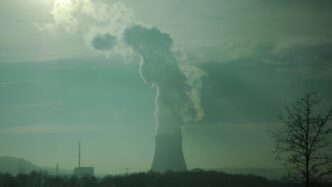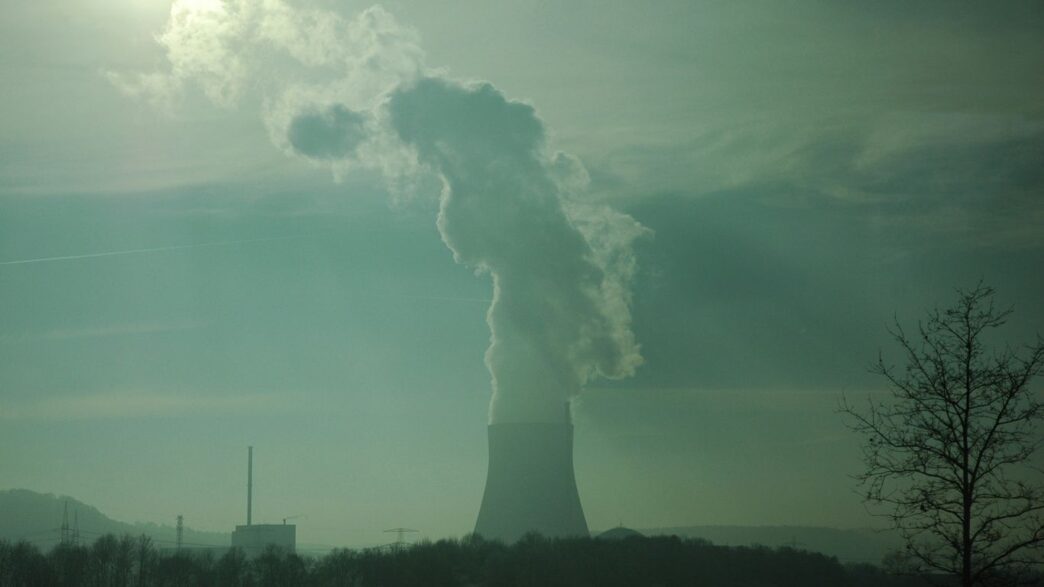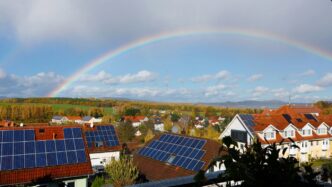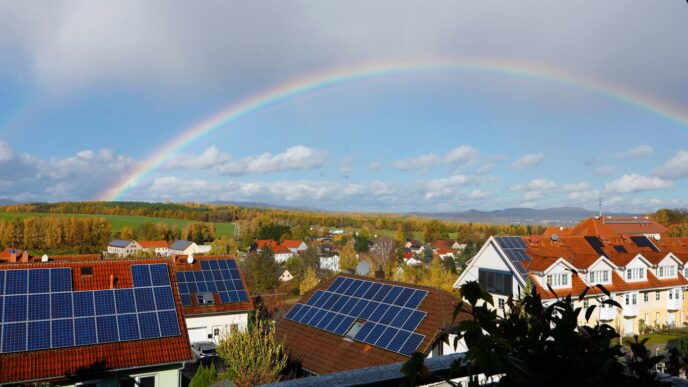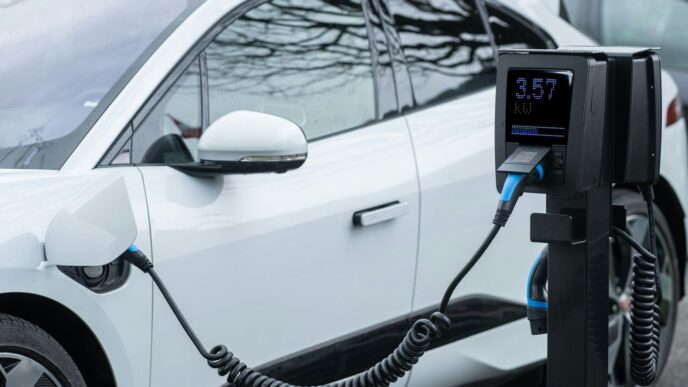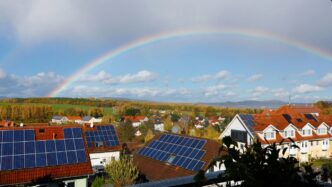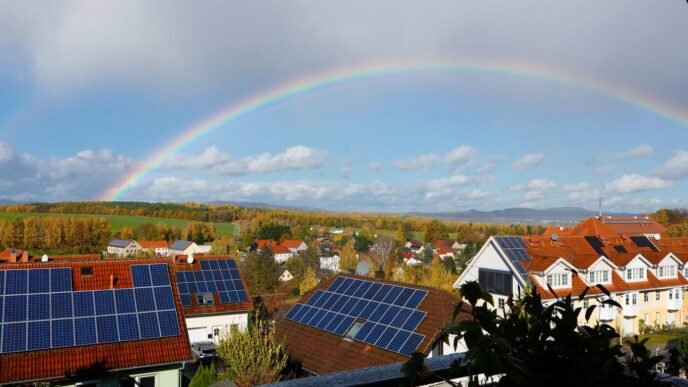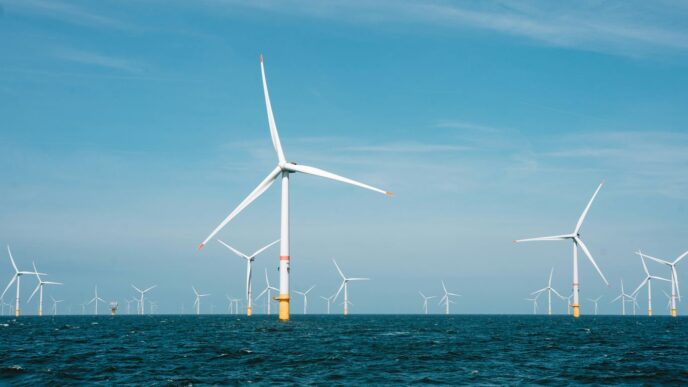New Jersey has a long history with nuclear power, from the now-closed Oyster Creek plant to the ongoing operations at Salem and Hope Creek. But what’s next for nuclear energy in the Garden State? We’re seeing new technologies emerge, shifts in government support, and a lot of talk about keeping existing plants running and even bringing some back online. It’s a complex picture, but one that could shape the state’s energy future for decades to come. Let’s take a look at what’s happening with new jersey nuclear power plant operations and potential.
Key Takeaways
- New Jersey’s existing nuclear plants, Salem and Hope Creek, are getting financial help through Zero-Emission Credits (ZECs) to keep them running, showing a state commitment to maintaining nuclear power’s role in its energy mix.
- While Oyster Creek is decommissioned, its site is being looked at for future nuclear tech, like small modular reactors, and has existing infrastructure that could support new energy projects.
- The state is actively working to support nuclear power through legislation and tax incentives, aiming to make it easier to build new facilities and attract investment in the sector.
- Restarting retired nuclear plants is a possibility being explored, though it’s a complex process with significant technical and economic hurdles, as seen with other plants across the country.
- New Jersey’s location, with its strong scientific community and infrastructure, positions it well to attract talent and investment for advanced nuclear technologies and to support high-power energy needs.
The Evolving Landscape of New Jersey Nuclear Power Plants
New Jersey’s nuclear power scene has been through some shifts, and it’s still figuring out its next steps. We’ve seen plants come online, and sadly, some have shut down. It’s a complicated picture, with economic pressures and changing energy policies playing a big part. The state is actively looking at how nuclear power fits into its clean energy goals.
Oyster Creek’s Legacy and Future Potential
Oyster Creek was New Jersey’s first commercial nuclear power plant, starting up way back in 1969. It was a big deal for a long time, providing a lot of electricity. However, it officially closed its doors in 2018. Now, the site is undergoing decommissioning, a process managed by Holtec International. While the plant itself is no longer generating power, the infrastructure at Oyster Creek, like its grid connections, might be useful for future energy projects, possibly even for things like fusion research.
Salem and Hope Creek: Sustaining Operations
These two plants, Salem and Hope Creek, are still up and running and are pretty important for New Jersey’s power supply. They’ve faced their own challenges, though. To help keep them going, New Jersey put in place a program called Zero-Emission Credits (ZECs). This program gives these plants financial support because they don’t produce greenhouse gases. The idea is to make sure that clean energy sources like nuclear can compete economically with other forms of power generation. The ZEC program has been extended, giving these plants a bit more stability for the coming years.
The Role of Zero-Emission Credits in New Jersey
Zero-Emission Credits, or ZECs, are a key part of how New Jersey is trying to keep its nuclear power plants online. Basically, the state created a system where electricity customers pay a small fee. This money then goes to nuclear plants that don’t emit carbon. It’s a way to put a price on the environmental benefit of nuclear power. This has been a lifeline for plants like Salem and Hope Creek, helping them stay operational when market prices for electricity are low. Without this kind of support, it’s tough for nuclear plants to compete, and we could see more closures, which would impact the state’s clean energy targets.
Innovations in Nuclear Technology for New Jersey

New Jersey is looking beyond traditional nuclear power, exploring some really exciting new technologies that could shape the state’s energy future. It’s not just about keeping the lights on; it’s about finding cleaner, more efficient ways to generate power.
Exploring Fusion Energy Prospects
Fusion energy, the process that powers the sun, is getting a lot of attention. New Jersey is positioning itself as a potential hub for this groundbreaking technology. The state has a strong foundation with places like Princeton University and the Princeton Plasma Physics Laboratory (PPPL), which are already doing top-notch research in plasma science. This expertise is key to figuring out how to control fusion reactions here on Earth. Plus, there’s a growing number of private companies investing heavily in fusion, and New Jersey is working to attract them. The idea is to build on the existing scientific talent and infrastructure, like the connections at the former Oyster Creek site, to support these new ventures. It’s a long road, but the potential payoff – virtually limitless clean energy – is huge.
Small Modular Reactors in New Jersey
Another area of innovation is Small Modular Reactors, or SMRs. These are basically smaller, factory-built nuclear reactors that can be deployed more easily and potentially at a lower cost than the massive plants we see today. Think of them as a more flexible approach to nuclear power. They could be a good fit for New Jersey, offering a way to add clean energy capacity without the huge upfront investment of a traditional plant. The regulatory side is still catching up, but the promise of SMRs is that they could be safer, more efficient, and easier to manage.
Advancements in Reactor Design
Beyond fusion and SMRs, there are ongoing advancements in the design of traditional fission reactors too. Researchers are looking at ways to make existing reactor designs even safer and more efficient, and to develop new types of reactors that can use fuel more effectively or produce less waste. This includes looking at advanced fuel cycles and improved safety systems. The goal is to make nuclear power, in all its forms, a more reliable and acceptable part of New Jersey’s clean energy mix for years to come.
Regulatory and Legislative Support for Nuclear Power

When we talk about nuclear power in New Jersey, especially looking ahead, the rules and laws in place play a pretty big part. It’s not just about building a plant; it’s about making sure it’s safe, reliable, and fits into the state’s overall energy picture. The government and various agencies have a lot of say in how things get done, from getting permits to making sure plants operate correctly.
New Jersey’s Clean Energy Legislation
New Jersey has been pretty active in trying to push for cleaner energy sources, and nuclear power is definitely part of that conversation. The state has put laws in place to encourage the development and use of energy that doesn’t produce a lot of greenhouse gases. This includes things like Zero-Emission Credits (ZECs), which basically give nuclear plants a financial incentive for the clean electricity they generate. It’s a way to make sure that nuclear power, which is already a big source of carbon-free electricity for the state, remains economically viable. Without these kinds of supports, it can be tough for nuclear plants to compete with other energy sources, especially when you consider the upfront costs and long-term investments involved. The goal is to keep these reliable, low-carbon power sources running.
Permitting Processes for New Facilities
Thinking about building new nuclear facilities, or even upgrading existing ones, involves a pretty detailed permitting process. The Nuclear Regulatory Commission (NRC) has specific rules, often referred to as ‘Part 52’ in the US, that streamline how new reactors can be licensed. This process can include things like getting an early site permit, which basically says a location is suitable for a nuclear plant before you even design it. Then there’s the design certification, where the NRC reviews and approves a specific reactor design. Finally, you can get a combined construction and operating license, which covers both building and running the plant all in one go. This is different from older methods that required separate permits for construction and operation. The Department of Energy (DOE) sometimes helps out with some of the costs associated with these processes, trying to make it a bit easier to get new projects off the ground. It’s a complex system designed to balance safety with the need for new energy infrastructure.
Tax Incentives for Nuclear Development
Beyond the direct support for clean energy, tax incentives can also make a difference for nuclear power projects in New Jersey. These incentives can come in various forms, like tax credits for building new plants or for making significant upgrades to existing ones. They can help offset some of the massive capital costs associated with nuclear energy. For instance, if a new reactor design is approved, or if an existing plant gets an extended operating license, there might be tax benefits available. The idea is to make nuclear power a more attractive investment for companies. It’s all part of a bigger push, seen at the federal level too, to boost the country’s nuclear capacity and ensure a stable, carbon-free energy supply for the future. These financial tools are important for encouraging the kind of long-term investment that nuclear power requires.
Economic Considerations for New Jersey’s Nuclear Sector
When we talk about nuclear power in New Jersey, the money side of things is pretty important. It’s not just about building plants; it’s about making sure they can keep running and that new technologies make financial sense. The cost-effectiveness of nuclear energy is a big piece of the puzzle.
The Cost-Effectiveness of Nuclear Energy
Nuclear power plants, especially older ones, can face tough economic challenges. Wholesale electricity prices play a huge role. If prices are too low, it becomes hard for plants to cover their operating costs, let alone make a profit. This is what happened with Oyster Creek, which eventually shut down. New Jersey has tried to help its nuclear plants, like Salem and Hope Creek, by offering Zero-Emission Credits (ZECs). These credits are basically payments for the clean energy the plants produce. The idea is to make sure these plants can stay online.
Here’s a look at how ZECs have worked:
| Plant(s) | Awarded ZECs | Funding Source | Expected Annual Revenue | Eligibility Period |
|---|---|---|---|---|
| Salem & Hope Creek | Yes | 0.4 c/kWh tariff on customers | ~$200 million | April 2019 – May 2025 |
It’s worth noting that the cost of these credits is passed on to electricity customers. Some studies suggest that supporting nuclear power through ZECs is actually cheaper than supporting other clean energy sources like wind power, especially when you compare it to things like the production tax credit for renewables.
Impact of Wholesale Power Prices
Low wholesale power prices have been a major headache for nuclear plants across the country, not just in New Jersey. When the market price for electricity drops, it squeezes the profit margins for nuclear operators. This is why policies that recognize the value of zero-emission energy are so important. Without them, plants that provide a lot of clean power can become economically unviable. It’s a delicate balance between market forces and the need for reliable, carbon-free electricity.
Investment in Grid Infrastructure
As we look towards the future, especially with new technologies like small modular reactors (SMRs) or even fusion, the existing grid infrastructure needs to be ready. These new facilities, or even the potential restart of older plants, might require significant upgrades to handle the power they can produce. Investing in the grid isn’t just about keeping the lights on; it’s about enabling the next generation of clean energy. This includes making sure transmission lines can carry the power efficiently and that the grid can handle the unique demands of nuclear facilities. It’s a big undertaking, but necessary if New Jersey wants to maintain and expand its nuclear capabilities.
Decommissioning and Restart Opportunities
Thinking about bringing old nuclear plants back online is a pretty complex topic. It’s not like flipping a switch. We’ve got to look at what’s already been done to shut them down and what it would take to get them running again. It’s a big question mark for the future of nuclear power in New Jersey.
Lessons from Oyster Creek Decommissioning
Oyster Creek’s story is a good example of the challenges involved. Once a plant starts the decommissioning process, especially if it involves taking things apart, it gets harder and harder to think about restarting it. It’s like taking apart a car engine – you can put it back together, but if you’ve thrown away too many parts, it’s just not practical anymore. For Oyster Creek, a lot of the heavy lifting for decommissioning has already happened. This means that while Holtec International is looking at new reactor tech for the site, restarting the old generating equipment isn’t really on the table. It’s past that point, unless you’re talking about putting in a whole new reactor.
The Feasibility of Restarting Retired Plants
So, can we actually restart plants that have been shut down? It’s not impossible, but it’s tough. Look at Palisades in Michigan, or Three Mile Island Unit 1 in Pennsylvania. These are plants that retired more recently and didn’t go too far into decommissioning. They’re seen as the most likely candidates for a restart. The key difference is how much work has been done. If a plant is just sitting there, maintained and monitored, it’s easier to bring back. If it’s been dismantled significantly, it’s a whole different ballgame, more like building something new.
Here’s a quick look at what makes a restart more or less likely:
- Decommissioning Stage: Plants in SAFSTOR (deferred dismantling) are better candidates than those already in deconstruction. SAFSTOR means the plant is kept in a state where radioactivity can decay, making future dismantling easier and potentially allowing for a restart with less reconstruction.
- Time Since Shutdown: While time matters, how well the plant was maintained during its shutdown period is even more important. Some plants might have deferred maintenance issues that pop up.
- Component Condition: Major components and systems need to be in good shape or repairable. Extensive reconstruction means higher costs and risks.
Holtec International’s Role in New Jersey
Holtec International is a company that’s really involved in this whole restart idea. They bought the Palisades plant and are working on getting it back online. They’re also looking at new reactor technologies, like small modular reactors, for sites like Oyster Creek. Their experience with Palisades shows that even a recent shutdown requires a lot of work, like rebuilding control room simulators and refurbishing major equipment. It’s a huge undertaking, costing hundreds of millions of dollars. For New Jersey, Holtec’s involvement could mean exploring new nuclear options, but the lessons from existing plants, both those being decommissioned and those being considered for restart, are really important to consider.
It’s a waiting game to see how these restart efforts play out, especially at Palisades. What happens there will likely set a precedent for other potential restarts, including any future nuclear ambitions in New Jersey.
New Jersey’s Strategic Position in Nuclear Energy
When you look at New Jersey’s place in the whole nuclear energy picture, it’s actually pretty interesting. It’s not just about the plants themselves, but also the brains and the infrastructure that make it all work.
Proximity to Scientific Talent
New Jersey is sitting pretty when it comes to smart people. We’ve got places like Princeton University and the Princeton Plasma Physics Laboratory (PPPL). These spots are basically hubs for folks who really know their stuff, especially when it comes to plasma physics, which is super important for things like fusion energy. It’s like having a built-in brain trust. This concentration of talent means we’re well-positioned to be at the forefront of new nuclear tech. Plus, there’s a whole ecosystem of startups and research institutions popping up, all focused on pushing the boundaries of what’s possible.
Infrastructure for High-Power Loads
Think about it: nuclear power plants, and especially future fusion facilities, need some serious electrical muscle. New Jersey already has a lot of the heavy-duty grid connections in place, thanks to its existing nuclear sites like the former Oyster Creek plant. This means we don’t have to start from scratch. We can handle the massive amounts of power these advanced energy sources will need to produce and send out. It’s like having a superhighway for electricity already built, ready for the next generation of energy.
Attracting Tristate Area Workforce
Being in the middle of the Northeast corridor is a big plus. New Jersey’s location makes it a convenient spot for workers from New York, Pennsylvania, and other nearby areas. We’re talking about a large pool of skilled labor – engineers, technicians, you name it – who might be looking for opportunities in the growing nuclear sector. The state is also working on making itself even more attractive, with legislative support and incentives, which can really help draw in the best and brightest from across the region. It’s about creating a magnet for talent and jobs.
Looking Ahead: New Jersey’s Nuclear Future
So, what’s next for nuclear power in New Jersey? It’s a mixed bag, really. We saw Oyster Creek shut down, and while Holtec is looking at new small reactors there, restarting the old parts isn’t really on the table. But it’s not all about shutting down and moving on. New Jersey is actually trying to support its existing plants, like Salem and Hope Creek, with programs that value clean energy. Plus, the state is putting itself out there, creating tax breaks and making it easier for new fusion companies to set up shop. They’ve got the brainpower and the location, which could be a big deal. It’s clear that New Jersey is thinking about nuclear energy’s role, both with what’s already there and what might be coming down the line. It’s a complex picture, but the state seems determined to keep its options open.

